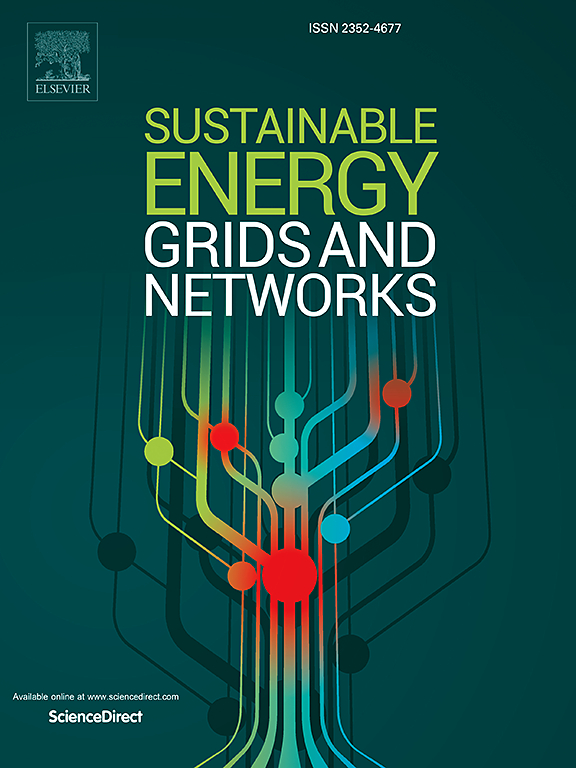Bi-level economic dispatch jointly driven by bilateral carbon measurement and carbon-green certificate trading under low-carbon coordination
IF 5.6
2区 工程技术
Q2 ENERGY & FUELS
引用次数: 0
Abstract
Although existing studies have incentivized source-side emission reductions through carbon trading and other mechanisms, unilateral carbon metering frameworks have predominantly focused on the power generation sector, overlooking the critical role of the user side as an emission driver. Moreover, the carbon-green certificate trading (CET-GCT) mechanism has largely been studied in isolation, lacking systematic synergy. This paper proposes a bi-level economic dispatch model jointly driven by bilateral carbon measurement and carbon-green certificate trading. Firstly, a bilateral carbon measurement framework is developed, incorporating dynamic characteristics of carbon emissions at the unit level and carbon emission flow (CEF) theory to accurately measure emissions from both the supply and demand sides. Secondly, a stepped CET-GCT joint mechanism has been introduced to facilitate the integration of renewable energy. Thirdly, a bi-level economic dispatch model is constructed, where the upper level formulates unit dispatch plans to minimize system cost, tracks emissions, and calculates node carbon intensity using the CEF model. The lower level then coordinates demand response guided by load node carbon intensity to achieve synergistic optimization of economic efficiency and carbon reduction. Finally, simulation results on a power node architecture demonstrate that the proposed model significantly lowers carbon emissions and improves the system’s low-carbon economic efficiency. Specifically, the proposed model reduces the total system cost by 15.9 %, reduces the cost of renewable energy abandonment by 14.8 %, and reduces total carbon emissions by 5.5 %.
低碳协调下双边碳计量与碳绿色证书交易共同驱动的两级经济调度
尽管现有研究通过碳交易和其他机制激励源侧减排,但单边碳计量框架主要侧重于发电部门,忽视了用户侧作为排放驱动者的关键作用。此外,碳绿色证书交易机制的研究在很大程度上是孤立的,缺乏系统的协同作用。本文提出了双边碳计量与碳绿色证书交易共同驱动的双边经济调度模型。首先,构建双边碳测量框架,结合单位层面碳排放动态特征和碳排放流理论,准确测量供需双方的碳排放;二是建立阶梯式CET-GCT联合机制,促进可再生能源并网。第三,构建双层经济调度模型,上层制定单元调度计划,以最小化系统成本,跟踪排放,并利用CEF模型计算节点碳强度。下一级以负荷节点碳强度为指导,协调需求响应,实现经济效益和碳减排的协同优化。最后,在功率节点结构上的仿真结果表明,该模型显著降低了系统的碳排放,提高了系统的低碳经济效率。具体而言,该模型使系统总成本降低了15.9%,可再生能源放弃成本降低了14.8%,总碳排放量降低了5.5%。
本文章由计算机程序翻译,如有差异,请以英文原文为准。
求助全文
约1分钟内获得全文
求助全文
来源期刊

Sustainable Energy Grids & Networks
Energy-Energy Engineering and Power Technology
CiteScore
7.90
自引率
13.00%
发文量
206
审稿时长
49 days
期刊介绍:
Sustainable Energy, Grids and Networks (SEGAN)is an international peer-reviewed publication for theoretical and applied research dealing with energy, information grids and power networks, including smart grids from super to micro grid scales. SEGAN welcomes papers describing fundamental advances in mathematical, statistical or computational methods with application to power and energy systems, as well as papers on applications, computation and modeling in the areas of electrical and energy systems with coupled information and communication technologies.
 求助内容:
求助内容: 应助结果提醒方式:
应助结果提醒方式:


